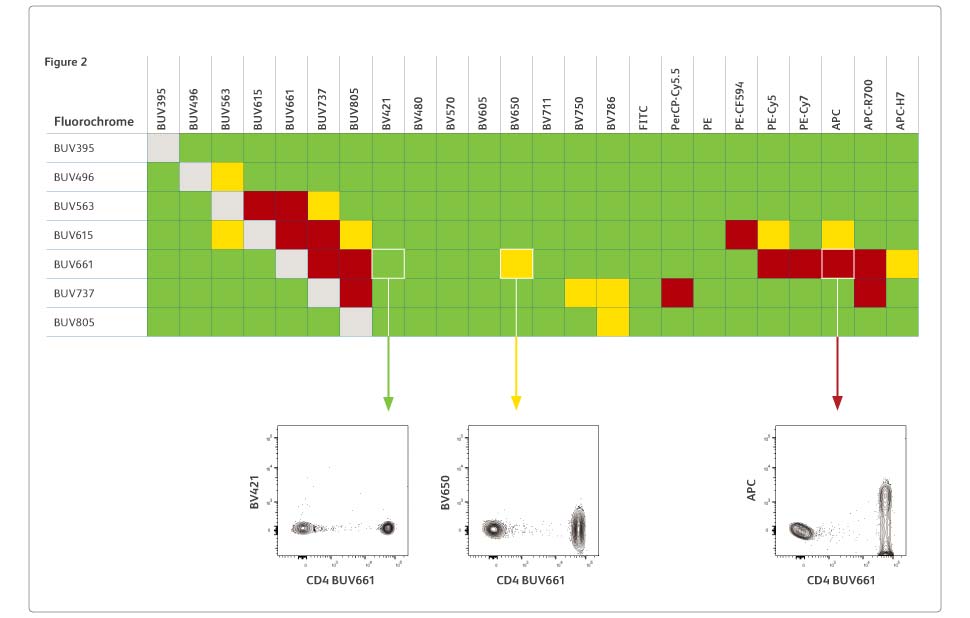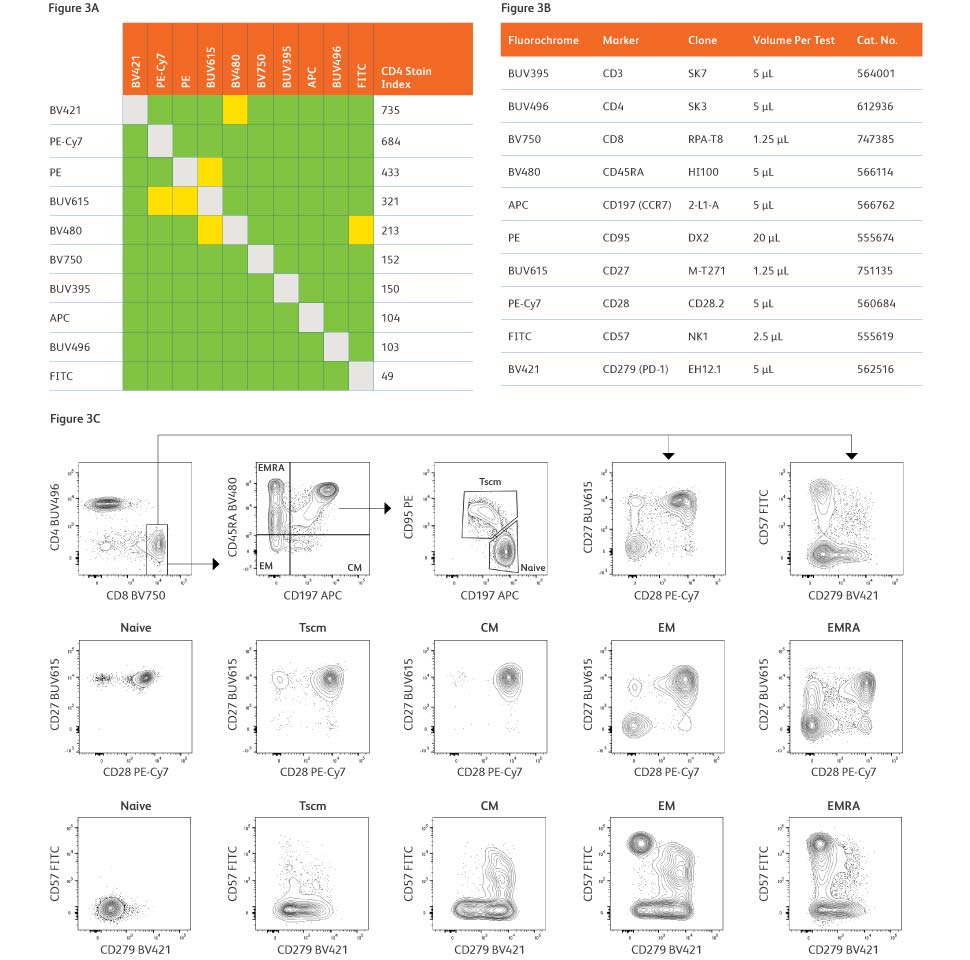Expand Your Horizon with BD Ultra Violet Solutions
April 20, 2022
Figure 1: Emission profiles of UV laser specific BD HorizonTM dyes
- Diverse applications from stem cell assay to high dimensional immunophenotyping.
- Panel design flexibility with more choice of UV laser excitable dyes.
- Design minimal compensation panel by including UV laser in instrument configuration.
- Wide choice of UV dyes with minimal spillover & spread to other detectors.

(Green=minimal spread; Yellow=medium spread; Red=high spread)
Figure 2: Representative summary of spread introduced by BD Horizon Brilliant™ UV Dyes into other detectors
Modern flow cytometers require multiple laser wavelengths to excite the wide variety of fluorescent probes. Importance for Ultra violet (UV) laser is increasing rapidly with advances in UV laser excitable dyes and expansion of applications. The major advantages of UV laser has traditionally been focused on early identification of stem cell side population through detection of Hoechst 33342 efflux or “live-dead” analysis with UV laser excitable viability dyes where detectors to other lasers could not be spared during panel design. However, the situation has changed significantly with the expansion of UV laser excitable dyes (Figure 1) for high dimensional immunophenotyping, making it a critical fifth laser wavelength.

Figure 3: Examples of 5 color immunophenotyping panels with minimal compensation on a 5 laser instrument including UV laser.
A balanced immunophenotyping panel including right combination of UV laser excitable fluorochromes not only aid in obtaining better resolution of dimly expressed markers, but also ensures high quality data by greatly reducing spillover and spread due to their limited impact on other fluorochromes in panel (Figure 2). Managing spillover between reagents is the most critical element of multicolor panel design. UV laser and reagents combination reduces the spillover and spread by distributing markers across multiple lasers. For example, in a 5 laser instrument (equipped with UV, violet, blue, yellow-green and red lasers) a 5 color minimal/no compensation panel can be designed by assigning one marker to the first fluorochrome excited by each laser, thereby increases panel design flexibility (Figure 3 & 4). The UV laser coupled with significant development in dyes boosted the application potential of this laser line. Researchers can now leverage UV laser for their conventional as well as high dimensional flow cytometry experiments, yielding high content information and improved biological insights as a consequence.

Figure 4: Example of a 10-fluorochrome combination with minimal spillover on a 5-laser (UV, violet, blue, yellow/green and red) BD LSRFortessa™ X-20 Cell Analyzer.

